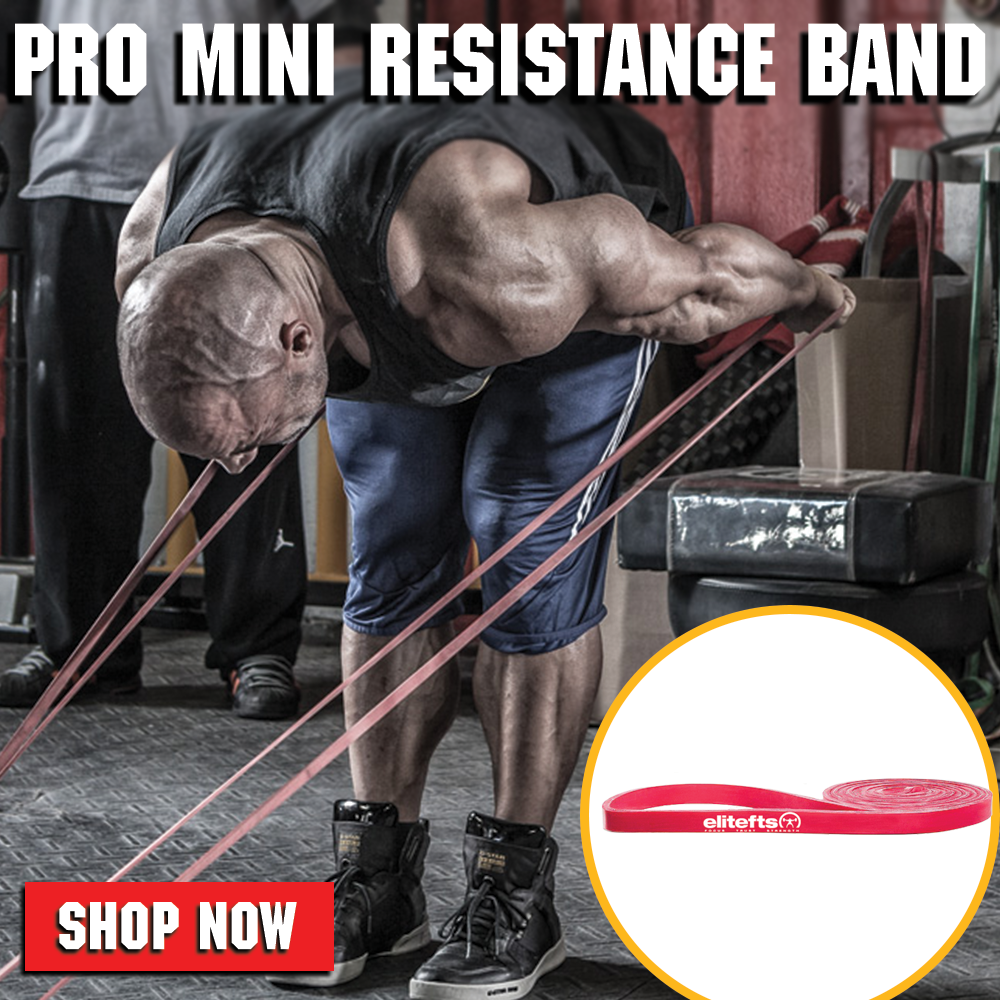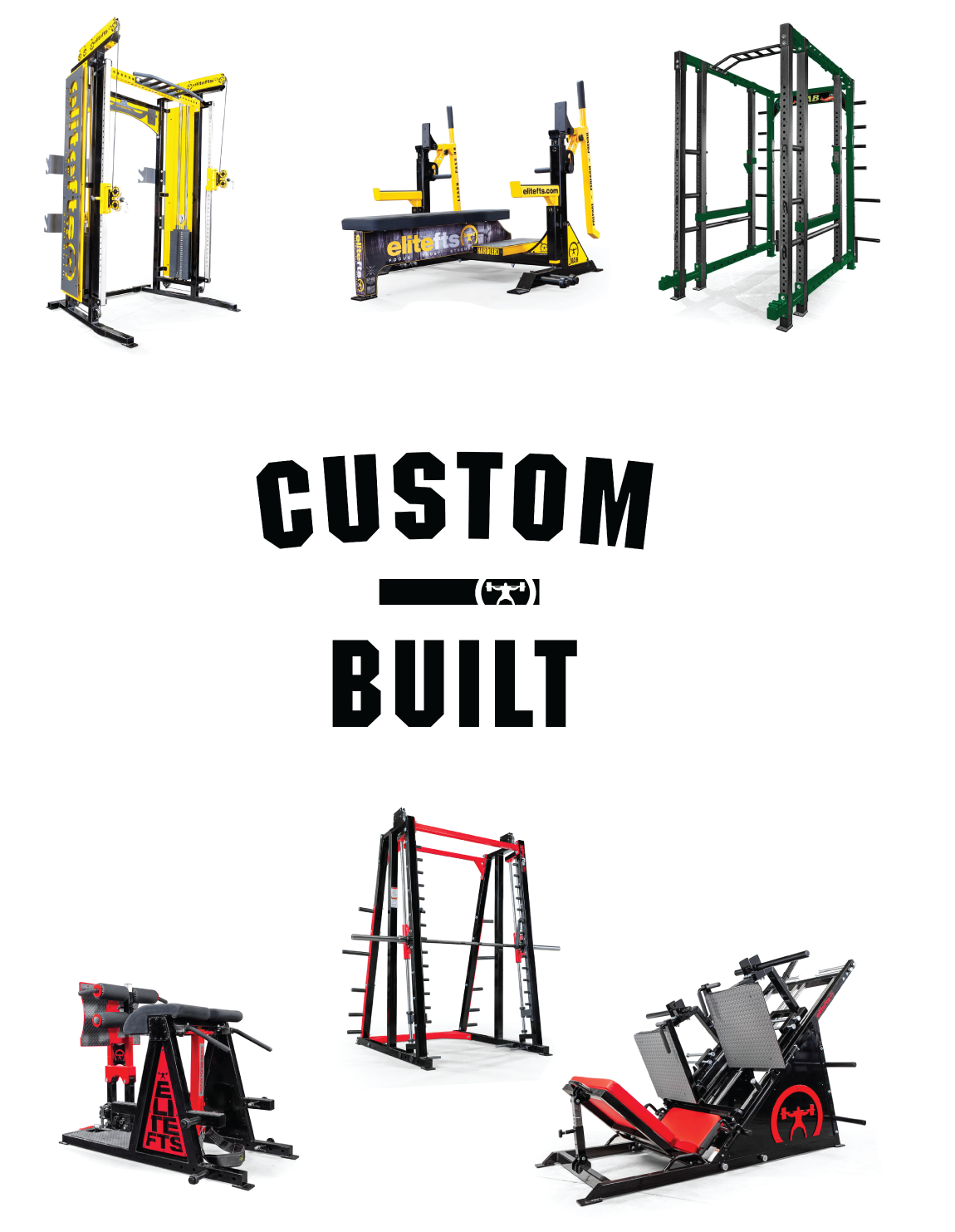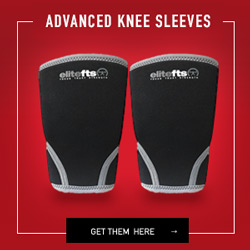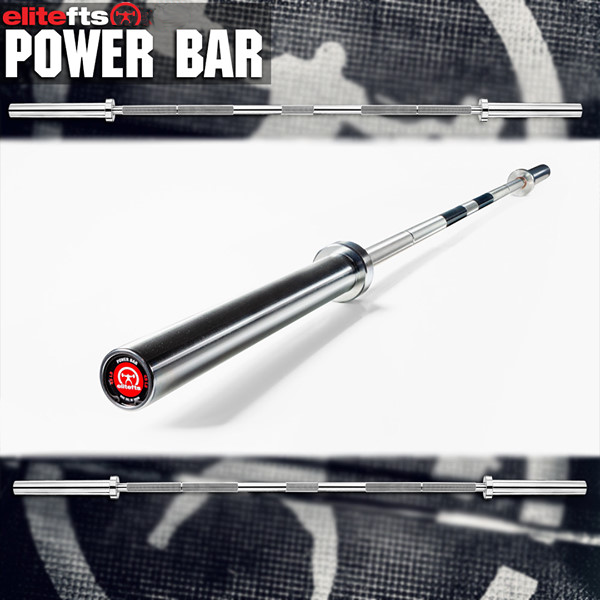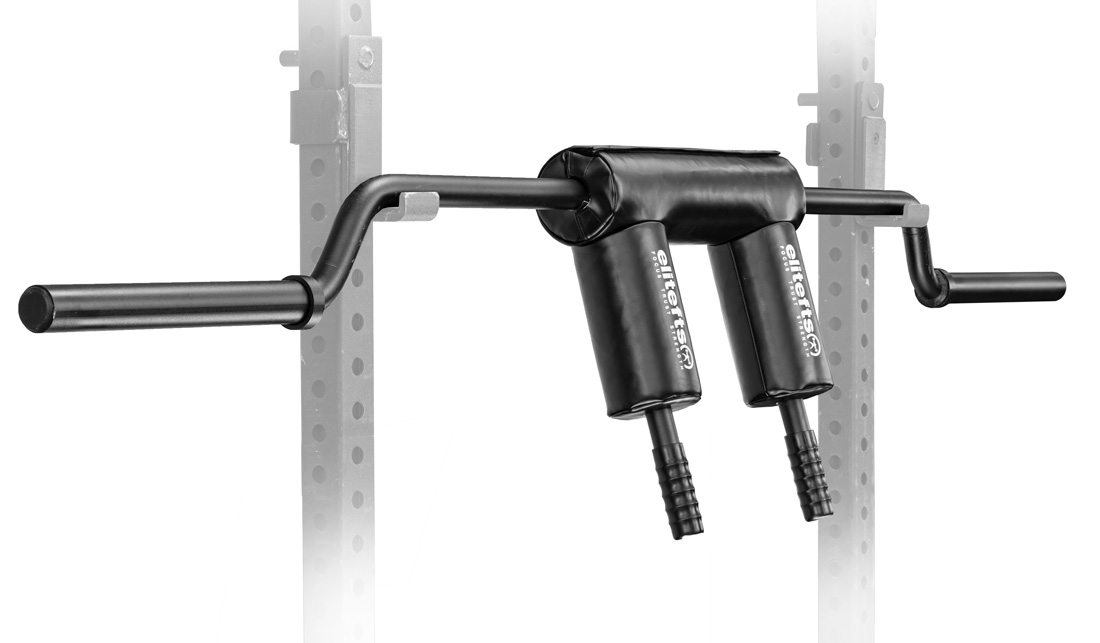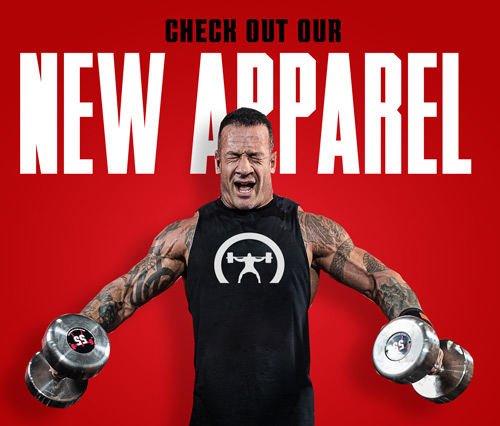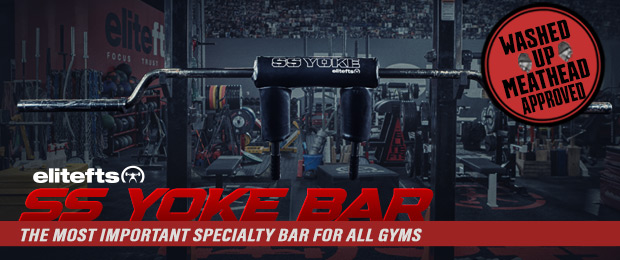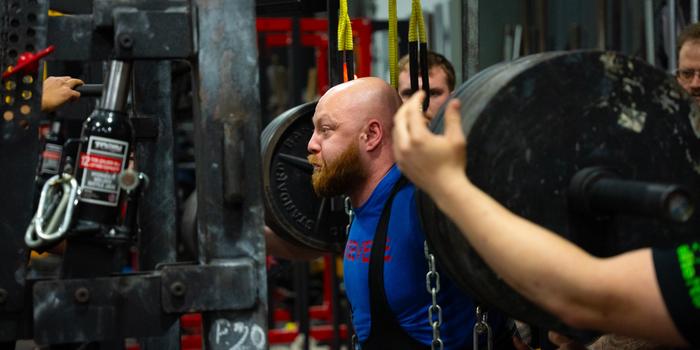
“There is simply no other exercise, and certainly no machine, that produces the level of central nervous system activity, improved balance and coordination, skeletal loading and bone density enhancement, muscular stimulation and growth, connective tissue stress and strength, psychological demand and toughness, and overall systemic conditioning than the correctly performed full squat.”
- Mark Rippetoe
There is No Squat Without the Barbell
The first mention of barbells can be traced back to 1854 and Hippolyte Trait, a professional strongman from France. Hippolyte Triat was born in 1813 and worked as a travelling acrobat until age fifteen, then spent six years in school before becoming a professional strongman. In 1840, Trait opened a gym in Brussels, managing it until 1849, when he moved to Paris and built a massive gymnasium of 9,500 square feet. Although he did not invent them, his gym featured spherical barbells first illustrated in 1854 by historian Edmund Desbonnet. He described them as “Barres à Spheres De 6 Kilos”, one reportedly weighing over 90kg/200lbs (not common at that time).
Triat's gym logo featured a spherical barbell, emphasizing its importance in his training philosophy, which he summarized with the motto “For the Regeneration of Man.” His unique barbells were a significant advancement in strength training equipment, allowing athletes to perform various exercises that helped develop muscle mass and overall strength. Trait’s contributions to strength training laid the groundwork for the development of modern weightlifting techniques.
Another noteworthy figure is Ludwig Durlacher, better known as Louis Attila. He was a German strongman born in 1844 and is best known as Eugene Sandow’s trainer. If you’re not familiar with Eugene Sandow, take a moment to look him up (and you should feel ashamed if you don’t know who he is). Attila was recognized not only for his incredible strength but also for his emphasis on technique and systematic training. He played a crucial role in shaping the world of bodybuilding, advocating for proper nutrition and physical conditioning. Louis Attila is credited as one of the first personal trainers and was a trailblazer in encouraging women to train with weights, breaking gender barriers in a time when such activities were often discouraged for females.
Some historians credit Professor Attila, who opened a gym in New York City in 1893, with popularizing the use of sand or lead shot to vary the weight of barbells. However, Boston strongman George Barker Windship is more deserving of the title of "inventor" of shot-loading weights. In 1859, Windship sought to lift the greatest weight on record and created an empty dumbbell weighing 141 pounds by attaching two 68-pound “shells” to a wrought-iron handle. This design could be increased to 180 pounds by adding shot.
Now, let’s explore the history of the modern barbell as we know today. The first person worth mentioning is Alan Calvert, who founded the Milo Barbell Company in Philadelphia in 1902. He derived the company’s name from Milo of Croton. The Milo Barbell Company introduced the first-ever adjustable barbells. To change the weight, a wing nut was unscrewed, but customers found this method too time-consuming.
In 1908, Calvert introduced the Milo Triplex. As displayed in a 1909 brochure, the four-and-a-half-foot Triplex appeared as a globe barbell when fully loaded. However, upon removing the outer shells, it revealed an innovative design with eight and a half-inch spheres divided for added functionality: one side could hold up to thirty pounds of shot, while the other accommodated adjustable iron plates ranging from twenty-five to two and a half pounds. Fully loaded, the bar weighed 105 pounds, and additional handles allowed the spheres to function as kettlebells or dumbbells.
Strength historian David P. Willoughby regarded the establishment of the Milo Company as “the greatest single impetus ever given to weightlifting in the USA.”
In 1905, Franz Veltum from Fechenheim, Germany, introduced the first revolving-type barbell. By 1910, Veltum’s revolving barbell began to be manufactured by the Nürnberg-based equipment company, Kaspar Berg. In 1928, during the Olympic Games in Amsterdam, Berg Company launched the modern Olympic barbell with revolving sleeves similar to the barbells we are accustomed to today.
The History of the Squat Rack
There can be no discussion of the squat without mentioning the power rack. In 1932, the first designs for squat stands were submitted to Mark Berry, a strongman, by readers Frank Gibson and Wayne Harold. But it wasn’t until the late 1930s that squat stands began to be manufactured and sold by Bob Hoffman of York Barbell. However, the first power rack design created by Bob Peoples would not emerge until the 1940s. Peoples was an American powerlifter and world record holder in the deadlift (329 kg/724 lbs at 81 kg/178 lbs). Interestingly, his first power rack design was made from timber. As a fun fact, he also designed the first lifting straps.
Now, let's turn our attention to the history of the squat itself, returning to Eugene Sandow. If you still don’t know him, he was a strongman and bodybuilder from Germany born in 1867. He is often referred to as the “father” of modern bodybuilding. His book Sandow’s System of Physical Training, published in 1894, is a classic that should be read by all physical training enthusiasts. In that book, we find one of the earliest mentions of the squat, which was then referred to as the “deep knee bend.”
“By bending the knees, dip the body in a vertical line to the heels, keeping the back straight and the chin drawn in. Recover and repeat the movement until the muscles ache. This is a good exercise in poising the body and in giving suppleness to the knee joints. If the muscles of the leg and thigh have been well toned, their natural elasticity will render the movement easy. Take care not to let the body sway or incline forwards or backwards on the hips.”
-Sandow’s System of Physical Training, 1894
Interestingly, for a time, the squat was performed on the toes, with heels together.
Fast forward to 1919, when Carl Moerke of Köln, Germany, became the first official flat-footed squatter, setting a world record of 240 kg (528 lbs). However, it was Henry Steinborn of Düsseldorf, Germany, who gained notoriety for the “Steinborn squat”. He performed 227 kg (500 lbs) for five reps. Steinborn later provided the designs for the Berg’s revolving barbell to Bob Hoffman of York Barbell. The Steinborn squat involved lifting one end of the barbell, bending sideways to place the barbell on the back, picking up the other end, squatting down, and standing up with it. Thank goodness for Bob Peoples and his power rack design!
Why Full Squats Are Better Than Half Squats
Returning to the fundamentals of the squat, or deep knee bend, it is essential to perform these exercises through a full range of motion, where the hamstrings cover the calves. First and foremost, a full range of motion squat helps maintain structural balance in the lower body. This balance allows for the long-term development of muscle strength and mass while preventing injuries, as muscles, joints, ligaments, and tendons function effectively within their full range of motion under heavy loads. A full squat is also an indicator of maximum strength and is the only exercise that does not lead to structural imbalances. In sports that require both high-speed movements and absolute strength, the full squat serves as a foundational exercise against which all other lower body strength parameters are compared.
Professor Vladimir Zatsiorsky, in his book Science and Practice of Strength Training, confirms that while we generate more tension in the legs during the upper part of the range of motion, the greatest force is produced from a full squat. In this context, the knee behaves like a spring: the greater the deformation (bending), the greater the force output. This implies that increased strength in a full squat correlates directly with greater potential for power production.
Additionally, performing a full range of motion squat balances the forces acting on the knee joint by engaging the posterior kinetic chain below 90 degrees of flexion. This activation allows the knee to move freely, building both passive (tendons and ligaments) and active (muscles) tension within the tissue (sarcomere). Consequently, this leads to improved intermuscular coordination through the uniform engagement of both the anterior and posterior kinetic chains.
Charles Poliquin, in his squat book, stated:
"Performing deep squats strengthens connective tissue, and the wrapping effect protects the knee. The tendon of the quadriceps muscle and the intercondylar notch of the femur create a wrapping effect that allows for an increased distribution of load on the joint."
In planning and programming, we clearly utilize variations of squats, including those with a shortened range of motion. However, regardless of the phase in which the athlete finds themselves, we should incorporate full flexion to tap into the athlete's greater potential. While it is true that we can typically handle more weight in a half squat, which generates increased compression forces on the spine and knees, deep squats are associated with lower intensity (less weight), making them safer in the long term. Additionally, deep squats are beneficial for the ligaments in the knees. MRI studies on Polish professional weightlifters have shown a 40% greater cross-sectional area of the anterior cruciate ligament. What do all weightlifters have in common? They all squat deep.
But isn't more weight better anyway? Even if it is in a short range of motion? Enter the Principle of Unequal Tension.
The Principle of Unequal Tension
When you consistently train only portions of a movement, such as in a half squat, you develop strength imbalances at specific points along the force curve. The "force curve" refers to the amount of force you can generate at different joint angles during an exercise. For instance, individuals generally exhibit greater strength at the top of a squat or bench press. On the other hand, a "resistance curve" describes how much resistance an exercise provides at various points throughout the movement. Full squat’s resistance curve is in the bottom position, and for that reason, we are the weakest at the bottom. The imbalances between upper/middle/lower resistance curves create weak links in the kinematic chain, which are the points where injuries are likely to occur.
“The amount of weight that an athlete can lift in a given motion is limited by the strength attainable at the weakest point of the full range of joint motion.”
- Dr. Vladimir Zatsiorsky
Are Full Squats Healthy for the Knees?
”Based on biomechanical measurements, the highest compressive forces and stresses can be observed at a 90° flexion of the knee joint during squats. As flexion increases, the wrapping effect contributes to enhanced force transmission at lower compressive forces.”
- Charles Poliquin
Based on the graphic below from Aaron Swnason, PT, we can observe the shear and compressive forces acting on the knee joint at different joint flexion angles. Clearly, the top range itself is the most destructive angle for the knee joint.
Half Squats Equal Half Legs
The consequences of half squats can be many. First, there is a muscular imbalance between the upper and lower ranges of motion, and failure to develop the full potential of muscular strength throughout its range.
Also, half squats do not create the appropriate tension due to beneficial angles in the joints; achieving high speed values does not necessarily mean better power values. Additionally, half squats take away our opportunity to fully train the stretch-shortening cycle. Finally, half squats do increase the tension in the rectus femoris muscle, thereby disrupting the function of the patellar ligament and often leading to 'jumper's knee.

The book Biomechanics in Sport states that: “The knee is constructed with four ligaments that are responsible for the functionality of the knee joint (ACL, PCL, MCL, LCL). These four ligaments work effectively when they operate through a full range of motion – extension and flexion. When the knee only works up to a 90° angle, the ligaments are not fully tense, which means they do not adequately protect the knee joint.”
Many other studies prove the protective effect of a full squat. Hartman et al. stated that: “With increasing flexion, the wrapping effect contributes to an enhanced load distribution and enhanced force transfer with lower retropatellar compressive forces…Contrary to commonly voiced concern, deep squats do not contribute increased risk of injury to passive tissues.”
Additionally, Escamilla R F, stated that: “The full squat does not compromise knee stability, and can enhance stability if performed correctly. Finally, the squat can be effective in developing hip, knee, and ankle musculature, because moderate to high quadriceps, hamstrings, and gastrocnemius activity were produced during the squat.”
Finally, Brad Schoenfeld, in his review article, stated, “In conclusion, there is scant evidence to show that deep squats are contraindicated in those with healthy knee function.”
Squat Types
Now, let’s examine the most common squat types you should be using in your training.
Box Squat
We have to start with the box squat. According to the story, Louie’s friend Eskil from Sweden discovered a training manual from the 1950s at a Polish weightlifting facility that demonstrated the box squat. The rest is history.
The box squat develops starting strength and acceleration and has the greatest strength potential among all squat types due to its emphasis on the posterior chain (gluteus, adductors, hamstrings). It allows for controlled depth with each rep and encourages great movement patterns, with an emphasis on technique. Box squats reduce stress on the knee joints because they involve lower knee joint torque compared to hip joint torque. They also greatly enhance hamstring strength through a controlled eccentric phase, separating the eccentric and concentric phases for explosive strength development. The box squat should be performed as the main movement in the A series (i.e., the first main exercise of the day).
Low Bar Squat
Next on the squat continuum is the low bar squat, popularized by Mark Rippetoe in Starting Strength. This squat emphasizes the posterior chain (gluteus, lower back, adductors, hamstrings) as well. Like the box squat, it allows for increased lifting capacity; however, this is primarily due to the hip hinge, which has different mechanics than the box squat. It has excellent transferability to Olympic lifts because of the similar mechanics involved in the second pull, as seen in the clean and jerk. Additionally, it can help manage knee pain, as the hip hinge moves the knee backwards during the concentric phase, reducing stress on the joint. The low bar squat is also adaptable for all levels due to its lesser mobility requirements compared to the types of squats discussed below. It features greater hip torque relative to knee torque and is performed in the A series as a main lower body movement.
High Bar Back Squat
The high bar back squat has a greater range of motion (ankle, knee, hip) and generates more activation in the soleus, gluteus, and quadriceps. It produces less shear force on the ACL and PCL because of the wrapping effect explained earlier in the article. While it does result in higher compression forces on the menisci and articular cartilage, if an athlete does not have issues with those structures, the increased range of motion is unlikely to contribute to problems. The high bar squat increases flexibility and mobility in the joints, particularly in the ankle joint. Research by Bud Charniga suggests that not performing full squats can decrease tendon elasticity, increasing the risk of Achilles tendon ruptures among athletes. It generates greater knee torque relative to hip torque compared to the box squat and low bar squat, and we also perform it in the A series as a main lower body exercise for the day.
Front Squat
The front squat is a form-focused squat, as it is harder to cheat on form than in any other type of squat. It serves as an objective assessment of lower body strength and mobility. The front squat further reduces shear forces acting on the ACL and PCL in the knee. It also alleviates hip flexor tightness and causes less overall stress on the spine. Additionally, it promotes greater anterior chain development, which boosts performance in Olympic cleans. For athletes, the upright trunk position has a significant transfer to jumping, running, and pushing, as it enhances vertical force production. It also transfers well to sprinting mechanics, as 90% of the forces during a sprint are vertical, while only 10% are horizontal (according to Barry Ross in Underground Secrets of Faster Running). We continue to perform it as a prime mover in the A series.
The last two squats are more accessory types, but they are also very important for the overall development of the lower body.
Cyclist Squat
We can’t conclude this article without addressing the cyclist squat, which was greatly popularized by Charles Poliquin. This variation uses a 30-degree slant board to develop the quadriceps, specifically targeting the VMO muscle. It is an excellent exercise for knee stability and health due to the reduced shear forces. The cyclist squat produces greater knee torque compared to hip torque, allowing this squat pattern to be effective even with limitations like hip pain, back pain, and inadequate ankle mobility. Due to its increased difficulty in anterior chain activation and decreased posterior chain involvement (mainly because of the slant board), the cyclist squat is performed in the B series as an accessory movement.
Hack Squat
The second accessory squat worth mentioning is the hack squat, popularized by George Hackenschmidt (who also invented the bench press, by the way—look him up; he was jacked). This squat utilizes a 45-degree slant board, which emphasizes the quadriceps while reducing upper body involvement. It produces less overall compression on the spine because the weight is held behind the body, lower than the center of gravity. The hack squat enhances range of motion and isolates the lower body muscles. It is also relatively easy on the knees (even with higher compression forces on the menisci and articular cartilage) due to the low intensity that generally does not exceed 40kg, unless performed improperly. Similar to the cyclist squat, the hack squat is performed in the B series as an accessory movement.
The graphic below will not provide a solution to all of your problems; however, it will help you identify the most suitable squat variation to accommodate any limitations you may have, whether they are short-term or long-term. By using this guide, you can select an appropriate squat type that aligns with your physical capabilities and training goals, allowing you to continue your strength training while minimizing the risk of injury or discomfort.

Choice of Squat Per Athlete
Lastly, the type of squat an athlete chooses will depend on several key factors:
- Performance Outcome: The specific goal or performance outcome that the athlete is aiming to achieve plays a significant role in squat selection. This could include objectives such as strength, power, hypertrophy (muscle growth), speed, or a combination of these goals.
- Mobility Restrictions: An athlete's mobility in the hip, knee, ankle, and shoulders is crucial in determining which squat variations are suitable. Any limitations in these areas may influence the type of squat they can safely perform while maintaining proper form.
- Previous Injuries: An athlete's injury history must be taken into consideration. Past injuries such as ACL or PCL tears, meniscus damage, cartilage issues, disc herniation, and shoulder injuries can greatly impact which squat types are appropriate and safe for them.
- Sporting Discipline: The specific sport the athlete participates in will also dictate the squat variation best suited for their needs. This includes strength sports, power sports, speed-strength sports, strength-speed sports, and mixed strength sports, each of which may require different squat mechanics to enhance performance.
- Individual Needs: Finally, each athlete has unique physical characteristics, training experience, and personal preferences that should be taken into account. Tailoring squat selection to meet these individual needs is essential for optimizing performance and reducing injury risk.
By considering these factors, athletes can make informed decisions about the most effective squat variations to incorporate into their training regimens.
References
- Andersen, V., et. al. Muscle activation and strength in squat and Bulgarian squat on stable and unstable surface. International Journal Of Sports Medicine. 2014. 35(14):1196-202.
- Bloomquist, K., H. Langberg, S. Karlsen, S. Madsgaard, M. Boesen, and T. Raastad. “Effect of Range of Motion in Heavy Load Squatting on Muscle and Tendon Adaptations.”
- European Journal of Applied Physiology 113.8 (2013): 2133-142.
- Bryanton, Megan A., Michael D. Kennedy, Jason P. Carey, and Loren Z. F. Chiu. “Effect of Squat Depth and Barbell Load on Relative Muscular Effort in Squatting.” Journal of Strength and Conditioning Research 26.10 (2012): 2820-828.
- Caterisano A, Moss RF, Pellinger TK, Woodruff K, Lewis VC, Booth W, Khadra T. The effect of back squat depth on the EMG activity of 4 superficial hip and thigh muscles. J Strength 6. Cond Res. 2002 Aug; 16(3):428-32.
- Chandler T, Wilson G, and Stone M. The effect of the squat exercise on knee stability. Med Sci Sports Exerc 21: 299–303, 1989.
- Charniga, B. “Practical solutions to the problem of Achilles rupture and the proliferation of injuries to the lower extremities of football players.” Sportivny Press, February 17, 2017.
- Charniga, B. “Should Female Weightlifters Be Injury Prone?” Sportivny Press, January 23, 2018.
- Dominguez, RH and Gajda, R. Total Body Training, Warner Books, pp. 247–248. 1982.
- Drinkwater, E., Moore, N., et al. Effects of Changing from Full Range of Motion to Partial Range of Motion on Squat Kinetics. Journal of Strength and Conditioning Research. 2012. 26(4), 890-896.
- Escamilla RF. Knee biomechanics of the dynamic squat exercise. Med Sci Sports Exerc 33: 127–141, 2001.
- Escamilla, RF, Fleisig, GS, Zheng, N, Lander, JE, Barrentine, SW, Andrews, JR, Bergemann, BW, and Moorman, CT. Effects of technique variations on knee biomechanics during the squat and leg press. Med Sci Sports Exerc 33: 1552–1566, 2001a.
- Escamilla, RF, Knee biomechanics in resistance exercise. Sports Medicine 33.4 (2003): 323-331.
- Esformes, Joseph I., and Theodoros M. Bampouras. “Effect of Back Squat Depth on Lower-Body Postactivation Potentiation.” Journal of Strength and Conditioning Research 27.11 (2013): 2997-3000.
- Fitzgerald B & McLatachie GR. Degenerative joint disease in weight-lifters fact or fiction. Brit J. Sports Med. 1980 August. 14(2&3):97-101.
- Fry AC, Smith JC, and Schilling BK. “Effect of Knee Position on Hip and Knee Torques During the Barbell Squat.” Journal of Strength and Conditioning Research. 2003; 17(4):629–633.
- Gironda, V. The Sissy Squat. January 1, 1975.
- Grzelak P, Podgórski M, Stefanczyk L, Krochmalski M, Domzalski M. Hypertrophied cruciate ligament in high performance weightlifters observed in magnetics resonance imaging. Int Orthop. 2012 Aug; 36(8): 1715-9
- Gullett JC, Tillman MD, Gutierrez GM & Chow JW. A biomechanical comparison of back and front squats in healthy trained individuals. J Strength Cond Res. 2009; 23:284-292.
- Hartmann, H., et al. Analysis of the Load on the Knee Joint and Vertebral Column with Changes in Squatting Depth and weight Load. Sports Medicine. 2013. Published Ahead of Print.
- Hartmann, Hagen, Klaus Wirth, and Markus Klusemann. “Analysis of the Load on the Knee Joint and Vertebral Column with Changes in Squatting Depth and Weight Load.” Sports Medicine 43.10 (2013): 993-1008.
- HENNING, C. E., M. A. LYNCH, and K. R. GLICK, Jr. An in vivo strain gage study of elongation of the anterior cruciate ligament. Am. J. Sports Med. 13:22-26, 1985.
- Klein, Karl. “The deep squat exercise as utilized in weight training for athletics and its effects on the ligaments of the knee.” Journal of the Association of Physical and Mental Rehabilitation. 1961; 15: 6–11.
- Klein, KK and Allman, Fred L. The Knee in Sports. Jenkins Publishing Company, January 1, 1969.
- Kjaer, M. “Role of Extracellular Matrix in Adaptation of Tendon and Skeletal Muscle to Mechanical Loading.” Physiological Reviews 84.2 (2004): 649-98.
- Laputin, N. (1976). Managing training of weightlifters. A.S. Barnes.
- Lieberman, Daniel. The Story of the Human Body: Evolution, Health, and Disease. New York: Pantheon, 2013. Print.
- Li G, Zayontx S, Most E, DeFrante LE, Suggs JF, & Rubash HE. Kinematics of the knee at high flexion angles: an in vitro investigation. J Orthop Res. 2004b; 27:699-706.
- Lorenzetti, S., Bulay, T., et al. Comparison of the Angles and Corresponding Moment in the Knee and Hip during Restricted and Unrestricted Squats. Journal of Strength and Conditioning Research. 2012. Published Ahead of Print.
- Meyers E. Effect of selected exercise variables on ligament stability and flexibility of the knee. Res Q 42: 411–422, 1971.
- Poliquin, C. (2021). The ultimate guide to squatting: The strength sensei. Strength Sensei Publications.
- Salem, George J. et al. Patellofemoral joint kinetics during squatting in collegiate women athletes. Clinical Biomechanics 16:424-430, 2001.
- Schoenfeld BJ. Squatting kinematics and kinetics and their application to exercise performance. J Strength Cond Res 24: 3497–3506, 2010.=
- Seitz, L., et al. The Temporal Profile of Post-Activation Potentiation is Related to Strength Level. Journal of Strength and Conditioning Research. 2013. Published Ahead of Print.
- Strossen, RJ. Paul Anderson: The Mightiest Minister. Ironmind Enterprises, May 1, 1999.
- Stone, MH and Chandler, JT. “NSCA Position Paper: The Squat Exercise in Athletic Conditioning.” National Strength and Conditioning Association Journal. 1991; 13(5):51–58.
- Stone, MH, and C. S. Collins. Explosive Strength Development in Olympic Weightlifting. Journal of strength and conditioning research 15.3 (2001): 232-242.
- Suchomel, T. J., (2025). Science and development of muscular strength. Human Kinetics.
- Suchomel, T.J., L. A. Nimphius. The Importance of Muscular Strength in Athletic Performance. Sports Medicine 2016.
- Todd, TR. “Karl Klein and the Squat.” National Strength and Conditioning Association Journal. 1984 June; 6:26–31. (Correction: Ref 32: The last name of the journal title should be Rehabilitation.)
- Todd, J. “From Milo to Milo: A History of Barbells, Dumbells, and Indian Clubs” Iron Game History, Volume 3 Number 6
- Walter, Chip. Last Ape Standing: The Seven-million Year Story of How and Why We Survived. New York: Walker &, 2013.
- Westside Barbell. (2019). The Westside Barbell book of methods. Westside Barbell.
- Wilk M, Zajac A, Tufano JJ. The Influence of Movement Tempo During Resistance Training on Muscular Strength and Hypertrophy Responses: A Review. Sports Med. 2021 Aug; 51(8):1629-1650. doi: 10.1007/s40279-021-01465-2. Epub 2021 May 27. PMID: 34043184; PMCID: PMC8310485.
- Wirth, K., Klusemann, M. The Importance of Muscular Strength in Athletic Performance. Sports Med. 2016 Oct; 46(10):1419-49. doi: 10.1007/s40279-016-0486-0. PMID: 26838985.
- Wirth, K., Klusemann, M. The Impact of Squat Depth on Performance in Jumping Tasks. Journal of Strength and Conditioning Research. 2012.
- Wirth, K., Klusemann, M. Influence of Squatting Depth on Jumping Performance. The Journal of Strength and Conditioning Research. 2012. 26 (12), 3243-61.
- H. Wang, Z. Wei. Influence of squat depth on hip and knee kinematics during squatting. Medicine and Science in Sports and Exercise 49.5 (2017): 895-902.
Miroslaw Babiarz, a renowned strength and conditioning coach based in Czeczewo, Poland, serves as the Director of Strength and Conditioning for both the Polish Weightlifting Federation and the Polish Rugby Union. He holds a Master’s in Kinesiology from Temple University and is currently a PhD candidate at Gdansk University of Physical Education and Sport. Babiarz founded the Strength & Conditioning Education Center (SCEC), which provides specialized training across various sports and develops professional courses for coaches. His expertise is endorsed by high-profile athletes and reflected in his authorship of numerous sports science publications. Babiarz holds prestigious certifications from the NSCA and is fluent in English.


